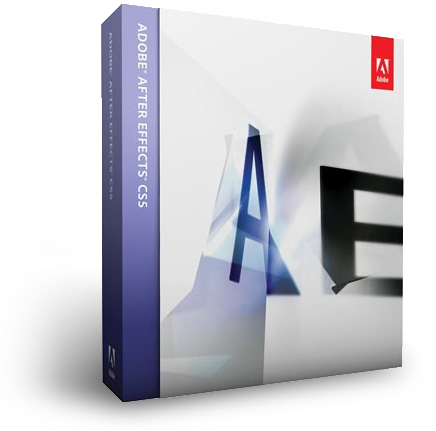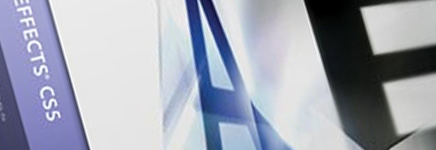The official unveiling of Adobe’s Creative Suite 5 is still several hours away, but it seems some websites already jumped the gun and released a whole bunch of details regarding this highly anticipated release. Here’s what we know so far.
It’s been a public knowledge that AE CS5 is going to be a 64 bit application only, so no news here. 64bit architecture is going to allow After Effects to use all of the system’s memory resulting in longer cached preview sizes as well as improved handling of high resolution animations (no more crashes when blurring huge layers). In addition, the AE engine had to be rewritten for the new architecture and the new one supposedly gained up to 200% performance increase.
But you already knew all that. Juicy fresh stuff after the break.

Roto Brush
This new tool is a combination of Photoshop’s Quick Selection Tool and AE’s tracking. With just a few brush strokes the user can define the keep and drop regions, letting Roto Brush find edges of the object. Once the areas are defined, AE will then chew through the following frames creating the matte according to the set rules.
No tool, of course will replace a skilled rotoscoping artist, but Roto Brush will definitely provide a good starting point for more detailed animated mattes.
Mocha Shape
AE’s integration with the Mocha tracker grows stronger in vestion CS5 with the introduction of Mocha for After Effects v.2 and Mocha Shape Effect. It will now be much easier to import your Mocha tracks, as well as the traveling mattes (either as a layer alpha or animated matte layer).
FreeForm
DigiEffects FreeForm plugin is now bundled with After Effects CS5. For the uninitiated: FreeForm allows you to create 3D wraps of the layer using either control points or displacing it by another layer.
I really dig the native inclusion of most popular plugins in new versions of AE. How about Particluar for CS6?
Adobe Repoussé
Repoussé is Adobe’s new engine for creating basic 3D models: extrusions, bevels, twists, intlations etc. While this is a Photoshop feature, After Effects CS5 will support importing Photoshop’s 3D objects – 3D text, anyone?
Imported 3D objects will obey After Effects’ 3D camera, but will not respond to AE lights – render styles will be set in Photoshop. The video below outlines some of the new additions to Photoshop CS5, including the use of Adobe Repoussé.
Color Finesse 3, Color LUT and Color Management Improvements
After Effects CS5 continues to expand advanced color correction and profiling toolset with these new additions. With the new Color LUT (Look Up Table) feature, you will now be able to import and export color correction profiles (similarly to the way ICC profiles work).
In addition to these, there is a whole bunch of color management improvements, but to be honest with you I am not very good with these, so you will have to look up the changes yourselves :)
RED R3D Support
Similar to the Camera Raw import, only for RED footage. Nuff said.
New Effects and Blending Modes
A few new effects are introduced in CS5, mostly dealing with various methods of color correction. Vibrance will enhance the color saturation of your images, Black&White will turn them into grayscale using controls similar to the B&W effect in Photoshop, while Selective Color will let you do color correction in an old-school CMYK way.
Additionally, Levels got some revisions, bringing it closer to the latest version of its Photoshop counterpart.
The two new blending modes are Subtract and Divide. They are pretty much the polar opposites of Add and Multiply modes. Subtract will be most likely useful for overlaying darker elements on top of the footage with more vibrant results than Multiply but without the color wrapping of Difference. Divide will come in handy for removing color casts (yay!).
One-node 3D Camera
When creating a new camera layer, the user will now be able to decide whether to use old style two-node camera (position + point of interest) or a one-node one (orienting around itself). That should eliminate some headaches people were having with controlling 3D views.
Navigating 3D cameras has been simplified as well, now resembling the methods used in most 3D applications (control keys and different mouse button dragging).
Mask Display Settings
The way masks are displayed can be now modified, including the size of control points. Hopefully grabbing masks should now become much easier (no more constant selecting of wrong layers).
For a full list of changes, check out the Adobe’s What’s New article in the Sources or tune into the unveiling event later today.
Sources:
- After Effects CS5 by Chris and Trish Meyer
http://provideocoalition.com/index.php/NABpost/story/after_effects_cs5/ - Adobe: What’s new in After Effects CS5
http://help.adobe.com/en_US/AfterEffects/CS5/Using/WS8269FE00-C552-478b-9204-69AF1B4F3432a.html
1 Comment
Add comment
This site uses Akismet to reduce spam. Learn how your comment data is processed.

[…] a few interesting features in this release, from the impressive content-aware tools in Photoshop to all the new stuff in After Effects. While all these new functionalities are welcome, CS5’s greatest improvement […]